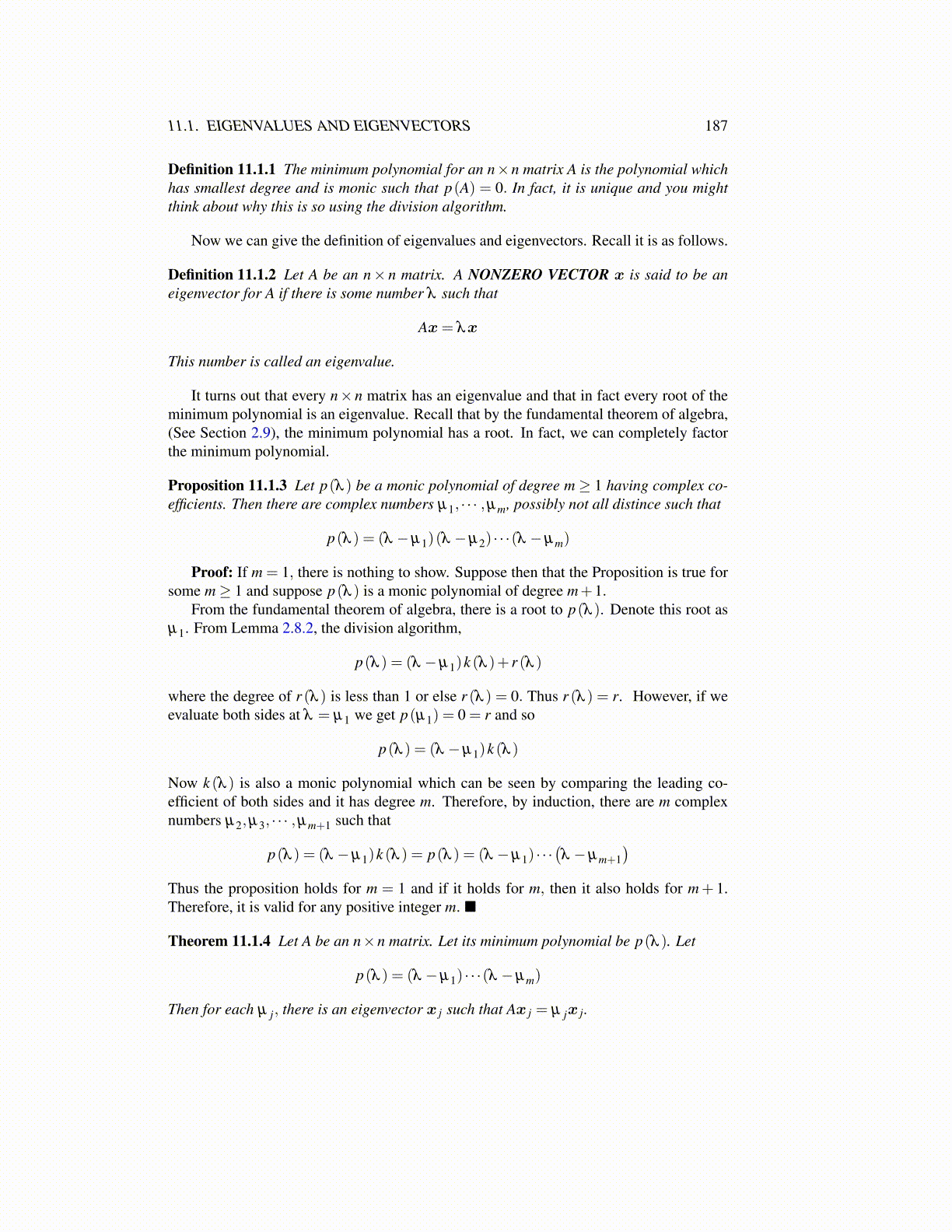
11.1. EIGENVALUES AND EIGENVECTORS 187
Definition 11.1.1 The minimum polynomial for an n×n matrix A is the polynomial whichhas smallest degree and is monic such that p(A) = 0. In fact, it is unique and you mightthink about why this is so using the division algorithm.
Now we can give the definition of eigenvalues and eigenvectors. Recall it is as follows.
Definition 11.1.2 Let A be an n× n matrix. A NONZERO VECTOR x is said to be aneigenvector for A if there is some number λ such that
Ax= λx
This number is called an eigenvalue.
It turns out that every n×n matrix has an eigenvalue and that in fact every root of theminimum polynomial is an eigenvalue. Recall that by the fundamental theorem of algebra,(See Section 2.9), the minimum polynomial has a root. In fact, we can completely factorthe minimum polynomial.
Proposition 11.1.3 Let p(λ ) be a monic polynomial of degree m≥ 1 having complex co-efficients. Then there are complex numbers µ1, · · · ,µm, possibly not all distince such that
p(λ ) = (λ −µ1)(λ −µ2) · · ·(λ −µm)
Proof: If m = 1, there is nothing to show. Suppose then that the Proposition is true forsome m≥ 1 and suppose p(λ ) is a monic polynomial of degree m+1.
From the fundamental theorem of algebra, there is a root to p(λ ). Denote this root asµ1. From Lemma 2.8.2, the division algorithm,
p(λ ) = (λ −µ1)k (λ )+ r (λ )
where the degree of r (λ ) is less than 1 or else r (λ ) = 0. Thus r (λ ) = r. However, if weevaluate both sides at λ = µ1 we get p(µ1) = 0 = r and so
p(λ ) = (λ −µ1)k (λ )
Now k (λ ) is also a monic polynomial which can be seen by comparing the leading co-efficient of both sides and it has degree m. Therefore, by induction, there are m complexnumbers µ2,µ3, · · · ,µm+1 such that
p(λ ) = (λ −µ1)k (λ ) = p(λ ) = (λ −µ1) · · ·(λ −µm+1
)Thus the proposition holds for m = 1 and if it holds for m, then it also holds for m+ 1.Therefore, it is valid for any positive integer m. ■
Theorem 11.1.4 Let A be an n×n matrix. Let its minimum polynomial be p(λ ). Let
p(λ ) = (λ −µ1) · · ·(λ −µm)
Then for each µ j, there is an eigenvector x j such that Ax j = µ jx j.